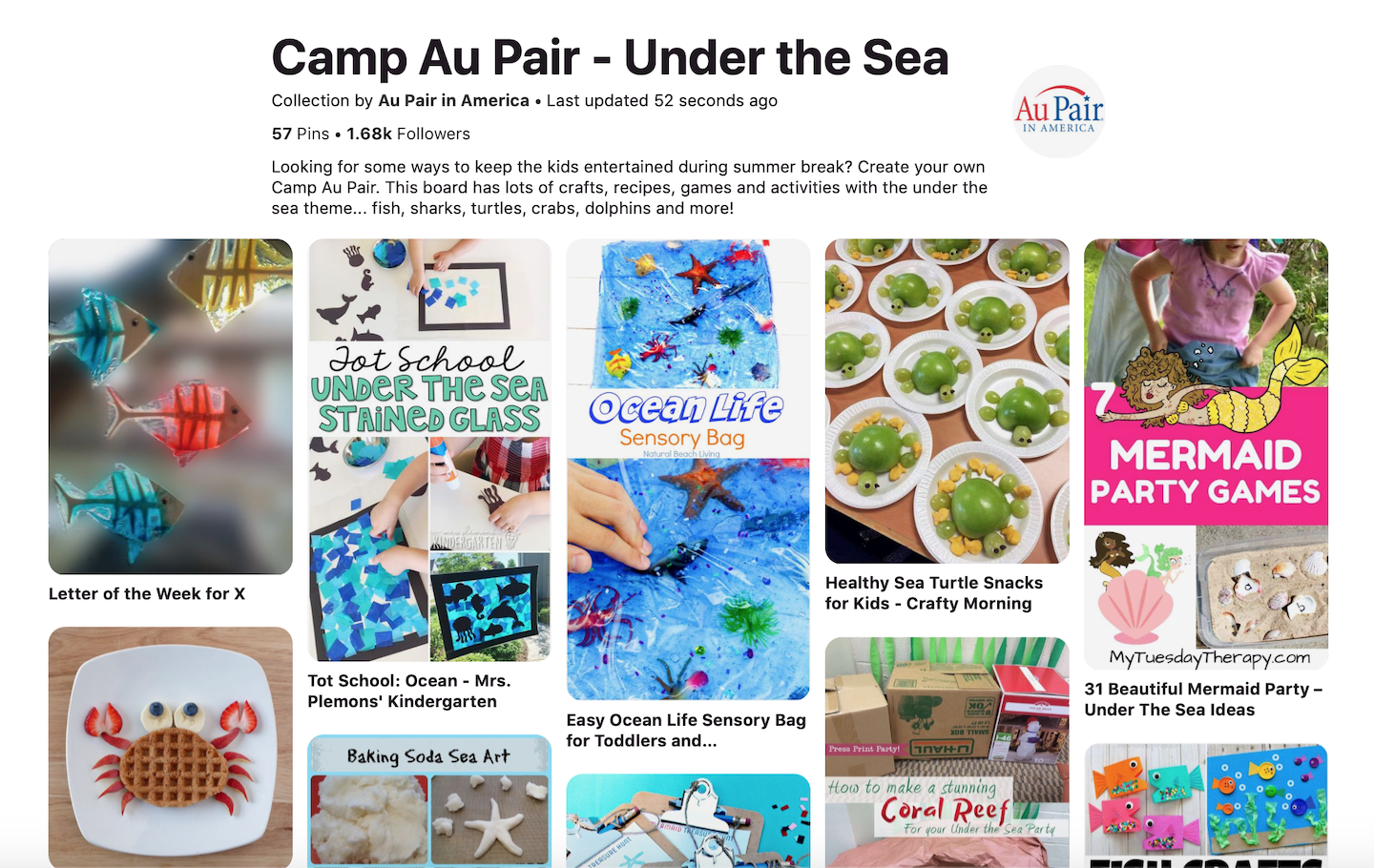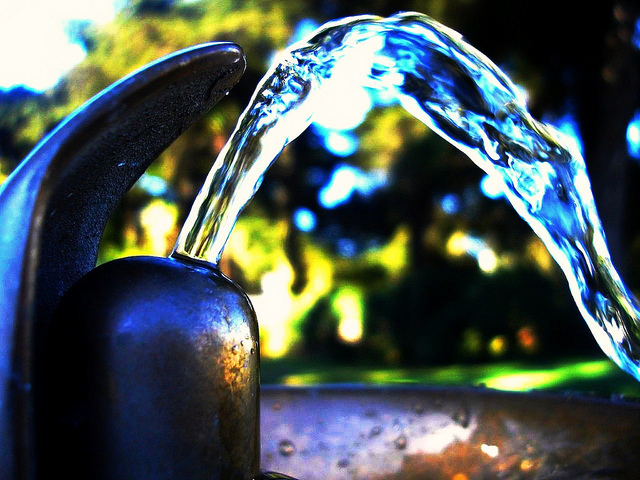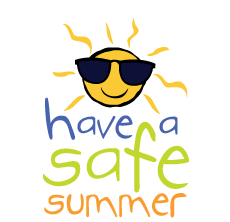
In honor of Shark Week (see below), next week’s Camp Au Pair theme is Under the Sea.
Crafts, recipes, activities, and games related to creatures who live under the sea can all be found here on the Camp Au Pair – Under the Sea pinboard.

Webcams – You can do a google search for aquariums and zoos across the country (and the world) with webcams that allow you to observe sea creatures. Here is one to get you started.
Field Trips can be a great way for kids to learn and have new experiences. Get permission from your host parents before any outings and be sure to take all social distancing precautions. Search online to see if your area has any of the following:
- Any pet store with fish tanks
- Aquarium
- Zoo
- Nature Center
Television – The Discovery Channel has an annual Shark Week. This year it will be July 11-18, 2021. Much of the programming will be too scary for younger kids, but for nature-loving tweens and teens, it could be a great way to get them interested in sharks and other ocean animals. Check out 15 JAW-some Activities for Shark Week with lots of fun ideas for kids in grades 5 and up, but a few for younger kids too.
Online Games – NOAA has fun interactive games that help kids learn about sea turtle survival.
Videos – Look for fun videos on YouTube about sea creatures. There’s more to see than Baby Shark. Movies like Finding Nemo, Dolphin Tale, and the Little Mermaid also go well with this theme.
- Ocean Animals for Kids
- All About Sharks for Kids
- Learn How to Save Sea Turtles
- Turtle Facts for Kids is a good video to start with for younger kids.
- If your kids are a little older, check out 10 Crazy Facts About Sea Turtles (below).
Books – Stop by your local library and look for books on sea creatures. The Rainbow Fish is a classic children’s book, your kids may already own. If not, you can find videos like this of it being read aloud.
Photo: mimisdollhouse.com




 Dehydration means that the body lacks the necessary amount of fluid. Infants and small children are more likely to become dehydrated than older children or adults, because they can lose relatively more fluid quickly.
Dehydration means that the body lacks the necessary amount of fluid. Infants and small children are more likely to become dehydrated than older children or adults, because they can lose relatively more fluid quickly. June 21st marks the first day of summer- Long hot days make for children to need some quiet time. Relax and unwind at the end of the day with some summertime reading.Pick out a few good books at the library and make a point to go back weekly.Most libraries will have a summer reading program and a list of age appropriate books you can choose from.
June 21st marks the first day of summer- Long hot days make for children to need some quiet time. Relax and unwind at the end of the day with some summertime reading.Pick out a few good books at the library and make a point to go back weekly.Most libraries will have a summer reading program and a list of age appropriate books you can choose from.